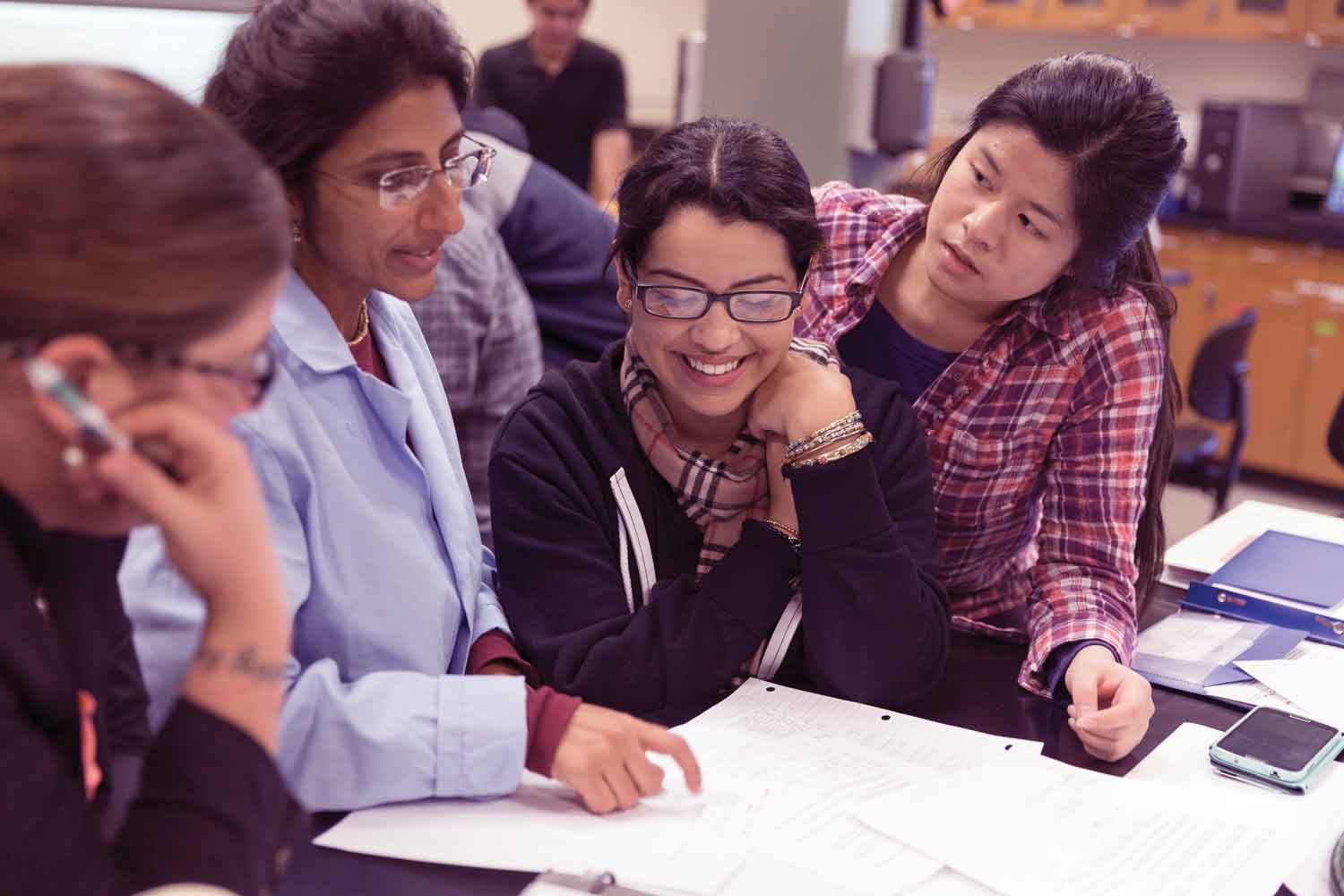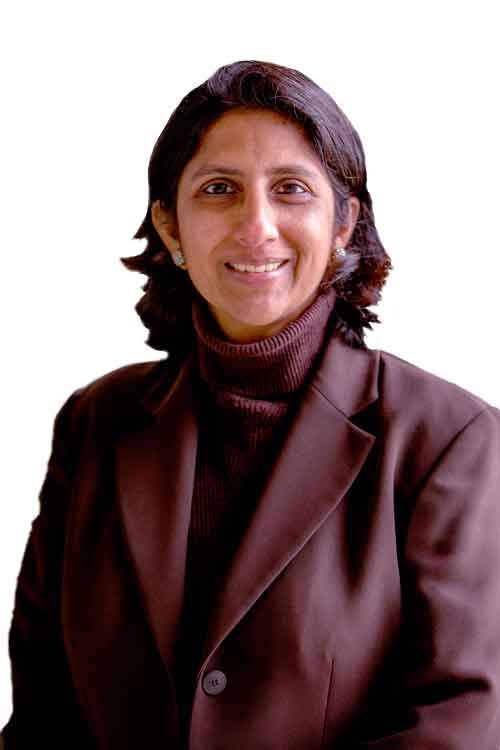 By Kim Lamb Gregory
By Kim Lamb GregoryAs a child growing up in India, Biology Professor Nitika Parmar, Ph.D. aspired to become an Indian classical dancer.
“But as I grew older and went to college, I wanted to become a doctor and go to medical school,” Parmar said. “But I could not stand the sight of needles and blood, so while I was getting my master’s degree, I got extremely interested in biotechnology and molecular biology.”
Her passion for teaching combined with her inquisitive nature led her to an undergraduate degree in Biophysics followed by two master’s degrees in Biotechnology and Biochemical Engineering from Pune University and the Indian Institute of Technology in New Delhi.
She then relocated to California where she earned a Ph.D. in Molecular Biology.
“I was very interested in going to California because in my mind was the image of driving your car along the beach in the sunshine with the wind in your hair,” she said. “California is a cool place to study.”
In 2006, she joined the Biology faculty at CSUCI after working as a scientist at the University of California, Los Angeles, for three years.
At CSUCI, she learned she loved teaching.
“Teaching is such an amazing art,” she said. “When you’re teaching, you’re learning yourself. Students are so inquisitive — they ask you to re-explore your own beliefs.”
Parmar also loved involving graduate and undergraduate students in her research, which ranged from potential cures for cancer to tissue regeneration using stem cells.
“The potential of stem cells is really amazing,” she said. “Let’s say somebody has a spinal cord injury and is paralyzed. You develop the right stem cell therapy and eventually they may be able to walk again.”
There is still a long way to go before these therapies become available, but Parmar is very optimistic about this field.
 Parmar developed a stem cell program at CSUCI with a grant she wrote 11 years ago for $4.5 million. Through another 2016 grant from the California Institute of Regenerative Medicine (CIRM), Parmar launched a program in which graduate students can get paid internships to do stem cell research at such cutting-edge institutions as City of Hope, Stanford University, and Scripps Research Institute.
Parmar developed a stem cell program at CSUCI with a grant she wrote 11 years ago for $4.5 million. Through another 2016 grant from the California Institute of Regenerative Medicine (CIRM), Parmar launched a program in which graduate students can get paid internships to do stem cell research at such cutting-edge institutions as City of Hope, Stanford University, and Scripps Research Institute.
Mathematics Professor Cynthia Wyels, Ph.D., has worked on grants with Parmar for science and mathematics students.
“Nitika brings her formidable intelligence and her calm demeanor to collaborate on initiatives such as writing grants to support our students,” Wyels said. “Rarely do I see people exemplify competence and kindness to the degree she does.”
When the pandemic struck, six graduate students, armed with the scientific method and directed by Parmar, began researching exactly how the coronavirus attacks human cells. The research continued through the Spring semester with undergraduate students in the Biology program.
“They are deciphering which proteins this virus encodes and how the virus can be attacked therapeutically,” Parmar said. “They are actively investigating the variants of the virus and what changes in the viral sequence which makes it more deadly.”
Except during the pandemic, Parmar has taken a group of undergraduates on a tour of India every year since 2015. The students visit 16 biotechnology companies and academic institutes, learn about Indian food and culture, and, among other activities, visit a sustainable village near Mumbai called the Govardhan Eco Village.
“That is my favorite place on this planet,” Parmar said. “It’s managed by monks with advanced academic degrees. These engineers and scientists have devoted their lives to saving nature and the environment. They use their skills and knowledge to make a soil biotechnology plant, a wastewater plant, conduct organic farming, generate fuel from plastics, among several other incredible initiatives. They empower women in rural areas and educate children free of cost.”
Class of 2021 Biology and Global Studies double major Patricio Ruano went on the trip to India and came back excited about his majors, and his plans to attend medical school.
“I’ve never been more excited to pursue biology research than when being taught by Dr. Parmar,” Ruano said. “As a first-generation student, pursuing medical school seemed like an unattainable dream. But much of the faculty—especially Dr. Parmar—has supported me in every step of this journey.”
For Parmar, trading her dream of becoming an Indian classical dancer for helping students pursue their dreams was the best choice she ever made.
Return to the Table of Contents
© Spring 2021 / Volume 26 / Number 1 / Biannual
